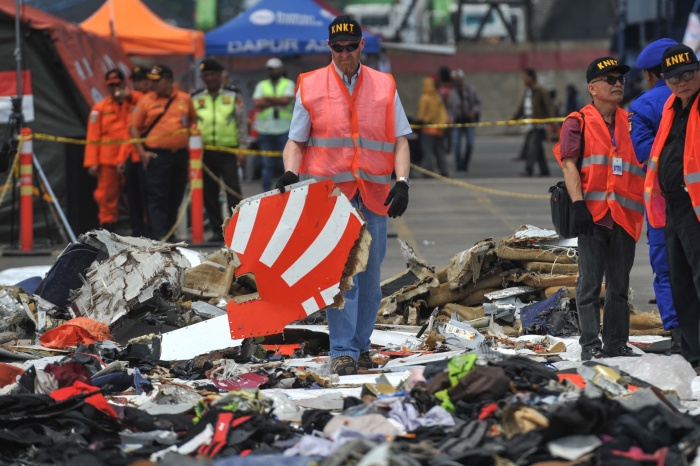
Series of failures led to Lion Air Boeing 737 Max crash
As many as nine separate failures contributed to the loss of a Boeing 737 Max operated by Lion Air last year.
Flight JT 610 came down in Indonesia shortly after take-off on October 29th, killing all 189 people in board.
Released today, an official report into the incident chronicles a series of faults with Boeing, Lion Air and the pilots that eventually led to the plane crashing.
“From what we know, there are nine things that contributed to this accident,” Indonesian air accident investigator Nurcahyo Utomo told reporters.
“If one of the nine had not occurred, maybe the accident would not have occurred.”
Investigators found issues with the Manoeuvring Characteristics Augmentation System - or MCAS - software on the plane designed to help prevent the 737 Max from stalling.
The Indonesia National Transportation Safety Committee report showed there were incorrect assumptions about how the system would behave and that the “deficiencies” had been highlighted during training.
In addition, the first officer had struggled to run through a list of procedures that he should have had memorised.
The report also said the jet should have been grounded after an earlier fault.
ADVERTISEMENT
The 353-page report suggests that a crucial sensor, which had been bought from a repair shop in Florida, had not been properly tested.
The investigation also found 31 pages were missing from the maintenance log of the plane.
Following a similar incident in Ethiopia in March this year, the entire global fleet of Boeing 737 Max planes was grounded.
The airline manufacturer has since been working on software updates to the aircraft type in order to have it recertified, with plans to have it back in the air by the end of the year.
Responding to the report, Boeing chief executive, Dennis Muilenburg, said: “We are addressing the National Transportation Safety Committee’s safety recommendations, and taking actions to enhance the safety of the 737 Max to prevent the flight control conditions that occurred in this accident from ever happening again.”
Since this accident, the 737 Max and its software have been undergoing an unprecedented level of global regulatory oversight, testing and analysis.
This includes hundreds of simulator sessions and test flights, regulatory analysis of thousands of documents, reviews by regulators and independent experts and extensive certification requirements.
Over the past several months Boeing has been making changes to the 737 Max.
Most significantly, the company has redesigned the way angle of attack sensors work with a feature of the MCAS flight control software.
Going forward, MCAS will compare information from both sensors before activating, adding a new layer of protection, the company said.
Image: Veri Sanovri/Xinhua News Agency/PA Images

